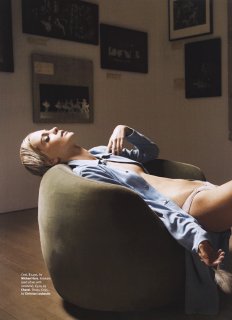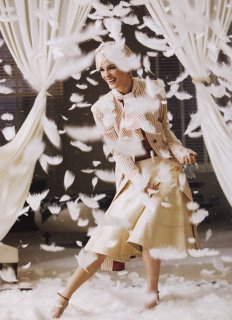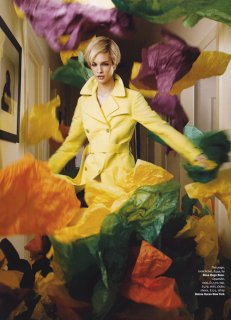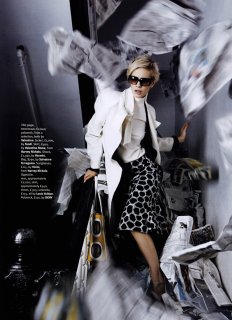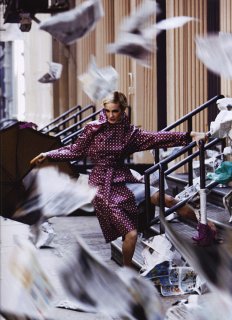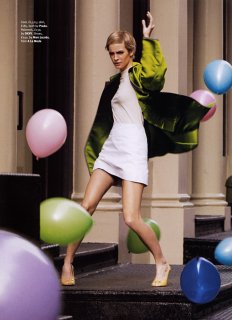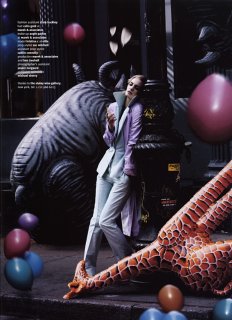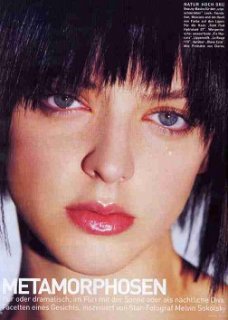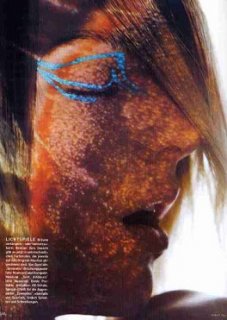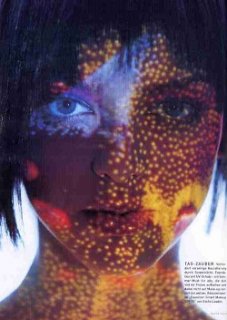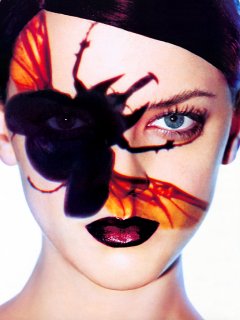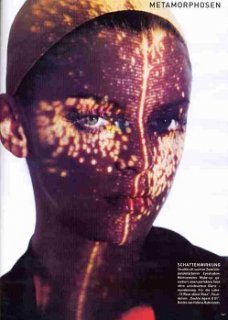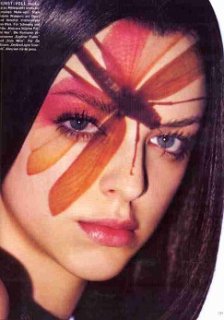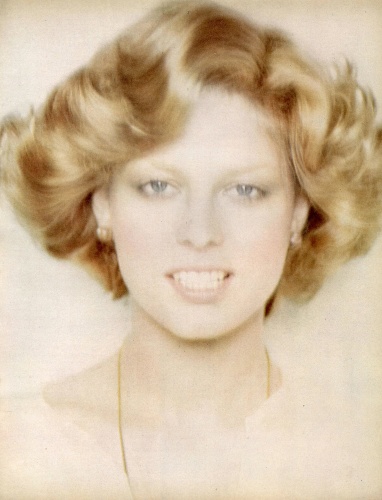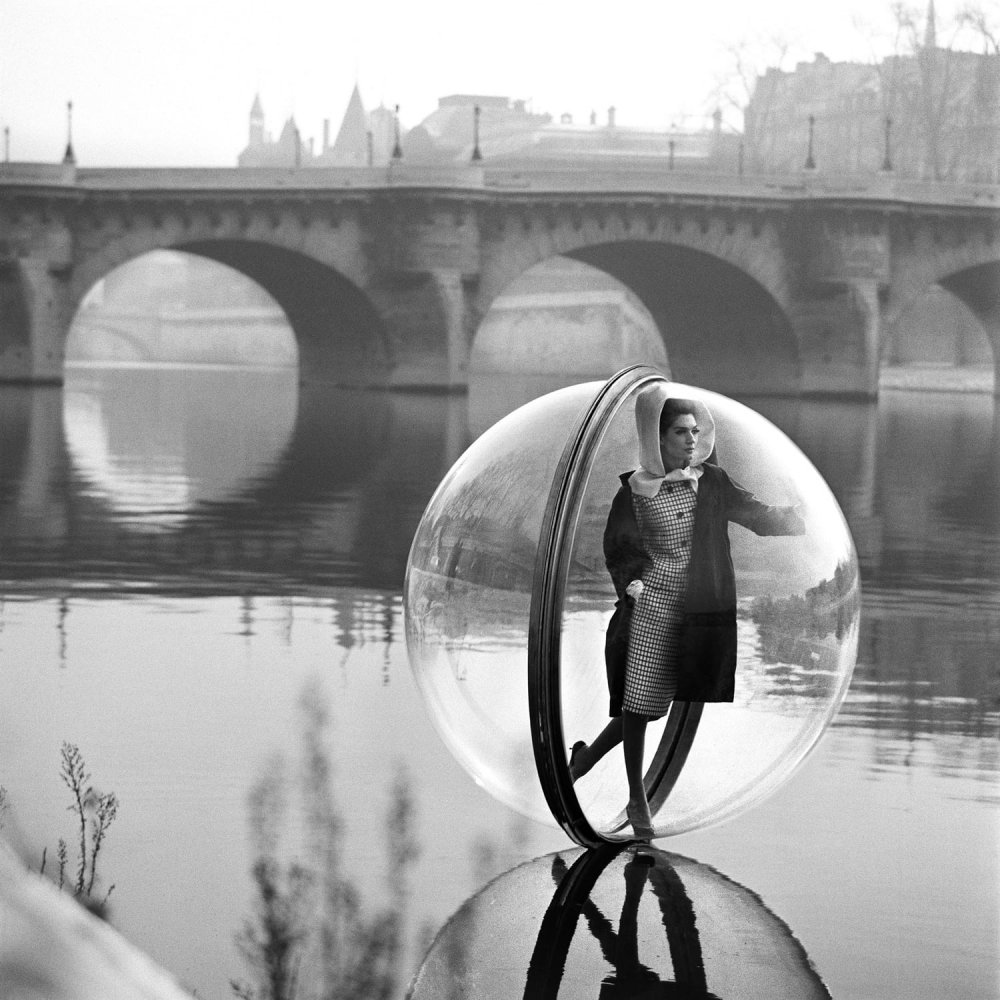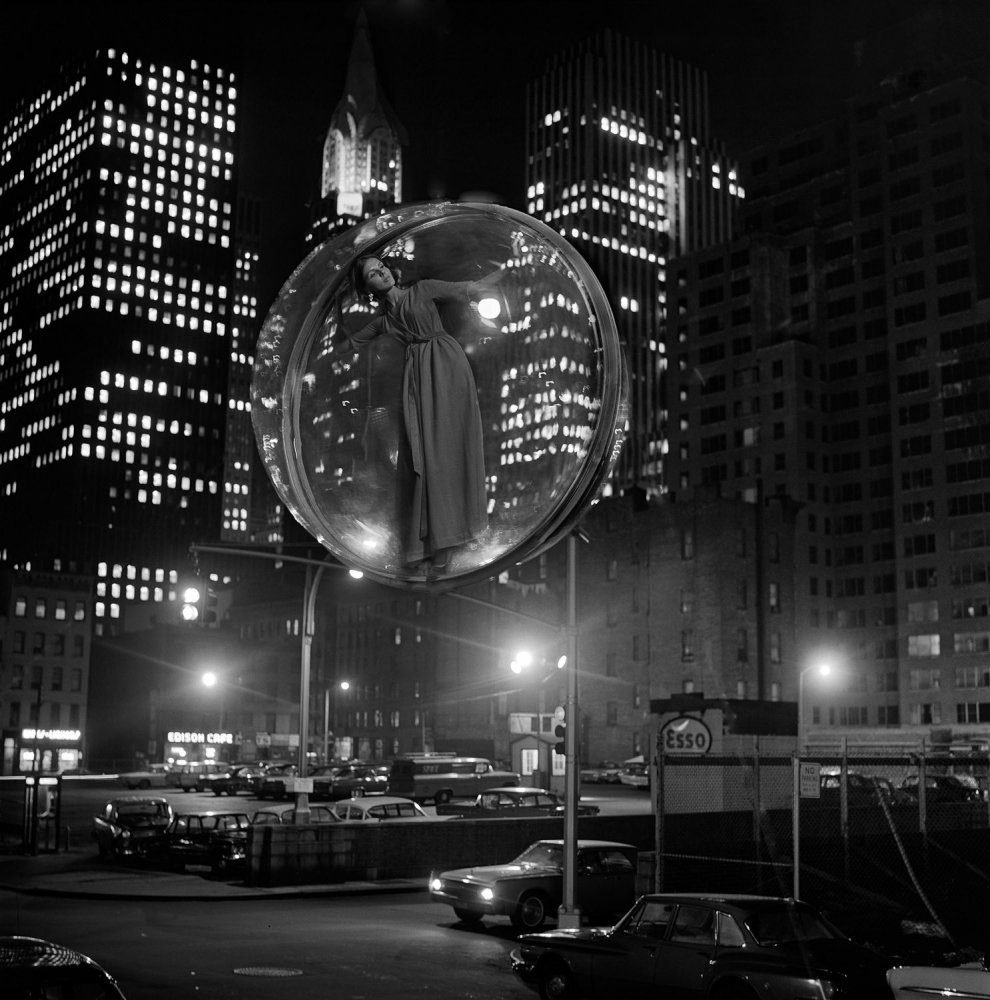[font=verdana, geneva, helvetica]Melvin Sokolsky
Seeing Fashion
Arena Editions, 2000
ISBN 1-892041-36-7[/font]
[font=verdana, geneva, helvetica]Melvin Sokolsky was one of the more successful New York advertising photographers of the 1960s. Advertising may be lucrative but it doesn't offer the photographer a by-line, and the work that brought him much more fame (if much less fortune) was his fashion photography, in particular for Harper's Bazaar. He also worked for other magazines, including McCall's, Ladies Home Journal, Esquire, Show and the New York Times. As well as fashion, Sokolsky also photographed many celebrities for the magazines, including Chet Baker, Mia Farrow, Dustin Hoffman, Lee Remick, and Lena Horne. In 1969 Sokolsky turned to a new and highly successful career in television commercials as a director and cameraman, winning twenty-five Clio Awards, and every major television commercial award including the coveted 'Directors Guild' nomination.[/font]
[font=verdana, geneva, helvetica]As well as over 190 of Sokolsky's pictures, the book also has a short but informative essay by Martin Harrison, the author of possibly the best published study of fashion photography, 'Appearances - Fashion Photography since 1945' which also features Sokolsky's work strongly. Harrison's work in these two books was invaluable in writing this feature..[/font]
[font=verdana, geneva, helvetica]Sokolsky grew up in New York and started taking pictures using his father's box camera at the age of 10. When he was around 16 he got talking to a photographer's assistant he met at a gym and was astounded to find that the photographer, Edgar de Evia, had been paid $4000 for one ad. Sokolsky decided that photography could provide him with a career and set out to teach himself from books - and by plaguing de Evia with questions until he was no longer welcome in his studio. [/font]
[font=verdana, geneva, helvetica]Soon Sokolsky was getting small jobs - often those that other photographers didn't want - and started building up a portfolio. At the age of 21 he was signed up by new art editor Henry Wolf to provide a fresh view on fashion for Harper's Bazaar.[/font]
[font=verdana, geneva, helvetica]Perhaps the first thing that impresses on viewing Sokolsky's work is its technical competence, with superb handling of lighting - at its most obvious in the 'simple' portraits and fashion work with a plain studio background.[/font]
[font=verdana, geneva, helvetica]It is perhaps because he was self-taught - one of the few photographers working in New York fashion who had not passed through the Alexey Brodovitch hot-house in some way or other - that Sokolsky seems to have felt a need to prove himself by coming up with new ideas for almost every session. There is a tremendous fecundity of vision and his work is thus the most varied of all fashion photographers of the period, but perhaps lacks the individual signature of some others.[/font]
[font=verdana, geneva, helvetica]The inspirations for his many ideas were often from works of art, particularly old master paintings that he knew either from the New York museums or from books. At times the sources are stated in such captions as 'Strassberg Van der Weyden', 'After Balthus' or 'After De Chirico', although these borrowings are not always convincing. His 'Shrimp Da Vinci' using a double exposure of Jean Shrimpton to give her 4 arms and 4 legs is clearly based on the painter's original work but also uses it intelligently, while his 'After De Chirico' simply poses the model in front of a poorly painted pastiche background. [/font]
[font=verdana, geneva, helvetica]Indeed, several other pictures in the book are perhaps more like De Chirico in their use of space and architectural features. One example is his surrealist inspired series taken using oddly spaced models in a white room set with giant props and an arched doorway. 'Veronica Snake' has a giant apple with a snake in the foreground while the model standing by the doorway wears an even more surreal pink hat. 'Bread Rocket' and 'Shrimp Bowler' add a further element; in the first, a man's bare arms and legs protrude into the picture through holes in the left-hand wall; in the second a black-suited figure in a bowler emerges to waist level from a hole in the floor. The rocket 'seen' through the doorway is a particularly unconvincing montage, but it fails to completely ruin the scene.[/font]
[font=verdana, geneva, helvetica]'Alice in Wonderland' is perhaps the source of his experiments with scale, posing models on a giant chair - there are examples in both black and white and colour. This work was perhaps at the back of the mind of fellow fashion photographer Duane Michals when he produced his intriguing sequence 'Things are Queer' some ten years later in 1973.[/font]
[font=verdana, geneva, helvetica]Many of the effects Sokolsky produced required the composite skills of the photographer and other members of a team - particularly the set builder and photo retoucher. Computer manipulation enables us to emulate much of his effects with a few clicks of a mouse, but this often involved much highly skilled work in those pre-digital days. There are several pictures about which I was left asking 'How did he do that?' but the book provides few clues. The picture of a model walking on the ceiling was presumably simply taken the other way up in a carefully built scene, but I love it mainly for its use of colour.[/font]
[font=verdana, geneva, helvetica]In 'Fly Dali' we see an unretouched picture in which the substantial wire cable shows exactly how his flying models were suspended - in this case against a plain studio background. Presumably this picture would be taken with no light on the background to give the aerial figure on a clear film background from which the cable could easily be retouched before the film was montaged onto a separate background. However the photographer may well have had more tricks up his sleeve.[/font]
[font=verdana, geneva, helvetica]The pictures using a model in a giant floating plastic 'bubble' in various scenes around Paris (examples on both Sokolsky web sites in the box at right) look more convincingly like location shots. Presumably the photographer had a crane driver as an assistant and the services of a good retoucher. Possibly the stimulus for these pictures was also the art gallery or book, and in particular Heironymus Bosch, whose 'Garden of Earthly Delights' shows various figures enclosed in bubbles. The bubble is perhaps an apt symbol for high fashion, a blown-up and ridiculous froth on the more serious business of selling clothes, composed entirely of make-believe. [/font]
[font=verdana, geneva, helvetica]Many of the hairstyles and garments Sokolsky was asked to photograph are hilariously incredible in their impracticability and it is difficult to believe they were ever worn outside the photographer's studio, much less bought. Fashion at this level was seldom really about selling frocks - much more about promoting images, whether of models or fashion house. Few great fashion photographers have had much of an interest in the clothes. Sokolsky took more care than many to actually show the fabric, but clearly his interest lay in woman rather than in clothing. Harrison quotes him as saying that he tried 'to show the gesture of the unclothed body beneath the garment. I want it to be as if the clothes did not exist. For me, if the merchandise is more important than the woman, then its not a good photograph.'[/font]
[font=verdana, geneva, helvetica]Fortunately for us - and Sokolsky - this is a book that includes many pictures in which the clothes do not matter. If you have any interest at all in fashion photography you will find much of interest and enjoyment in this work.[/font]
[font=verdana, geneva, helvetica]Melvin Sokolsky: Seeing Fashion is available from all good bookshops or online - see the full links at the end of this feature. [/font]
This must be one of the best works I've seen recently, wow. He's like a modern magician. The photos with the woman in the bubble are truly amazing, I always feel a bit like that, floating around in my own world where nobody sees what I'm really at.


 "Up in the air in Haute Couture", could be the title of a song. Or not...
"Up in the air in Haute Couture", could be the title of a song. Or not...










































